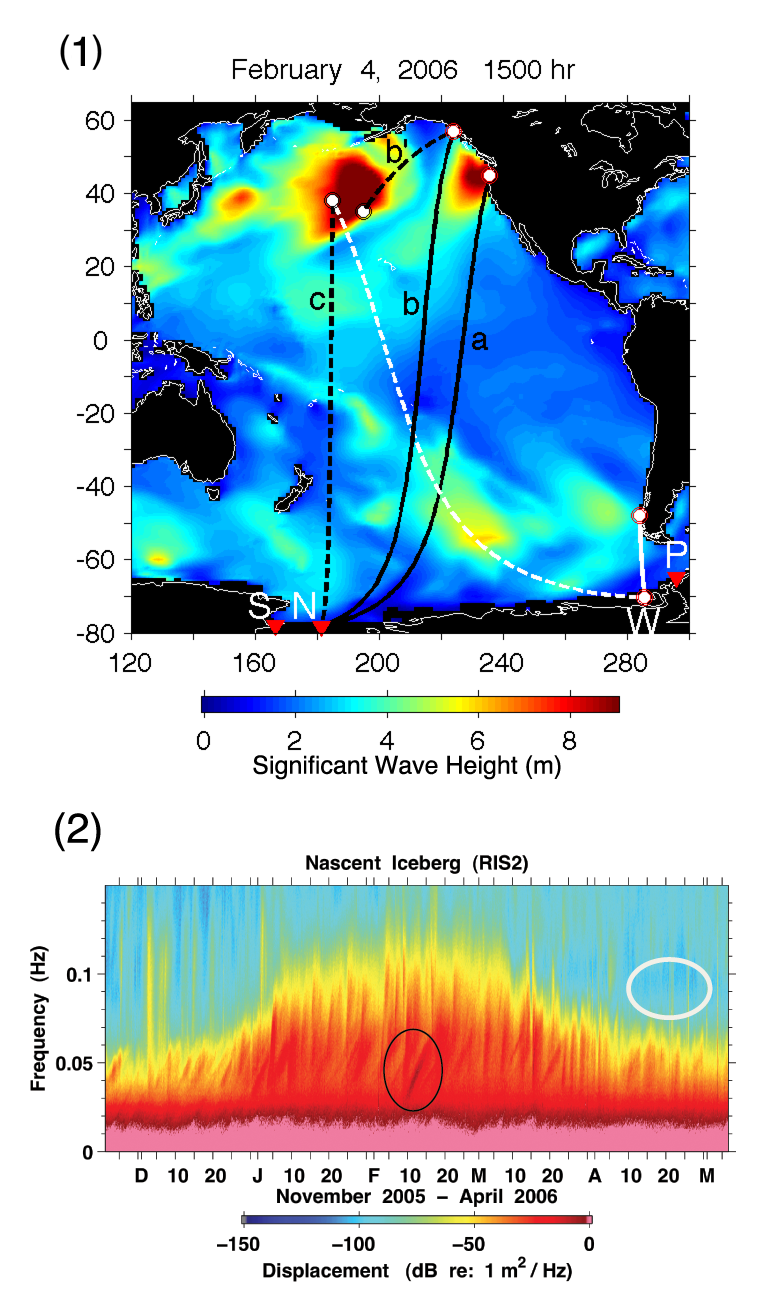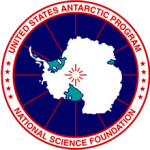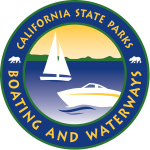Taking the Pulse of the Ross Ice Shelf
Background
A principal goal of this project is to quantitatively assess the spatial characteristics of the strain response of the Ross Ice Shelf (RIS) to the ocean gravity wave spectrum through an annual cycle. Changes in the ocean environment due to a changing climate (e.g., increasing storminess, decreasing sea-ice cover, and warming ocean waters) would affect the integrity of West Antarctica’s ice shelves. The response of the RIS depends on properties of the coupled ice shelf/sub-ice shelf water cavity system underlain by the solid Earth, as well as on the structural and elastic properties of the ice and their variability. Similar to monitoring changes in wave activity using land-based seismometers along the California coast (Bromirski et al., 1999), environmentally induced changes in the ice-shelf system can be detected using seismometers deployed on the ice-shelf, e.g. by observing changes in RIS resonance characteristics (Bromirski and Stephen, 2012) or changes in the cross-correlation between sensors (Shapiro et al., 2005, Gerstoft et al., 2006) of seismic noise induced by wave impacts .
 This study was motivated by initial analysis of broadband seismometer data collected near the front of the Ross Ice Shelf during 2005-2006 by Cathles et al. (2009) and MacAyeal et al. (2006).
Ice shelves buttress ice sheets on land, restraining ice sheet movement towards the ocean. Ice shelves are appreciably (and constantly), flexed, rocked, rolled, pitched, elongated and compressed by various components of ocean waves. Recent theory and observations indicate that a better understanding of ice-shelf/ocean-wave interactions can lead to a better understanding of ice-shelf evolution in a changing environment, that includes increased storminess and related ocean-wave effects, anticipated to be similar to that observed along the California coast where these factors (Bromirski et al., 2003; Bromirski et al., 2016; Bromirski et al., 2005a), combined with rising sea level, affect rates of sea cliff retreat. Additionally, gravity wave impacts on ice shelves could significantly affect ice shelf rift propagation, expansion of crevasses and other pre-existing fractures, affecting ice shelf integrity. The collapse of ice shelves allows glacial ice on land to flow faster to the ocean, raising sea level. The response of ice shelves to gravity wave impacts and ice shelf properties can be measured by seismometers deployed on ice shelves.
This study was motivated by initial analysis of broadband seismometer data collected near the front of the Ross Ice Shelf during 2005-2006 by Cathles et al. (2009) and MacAyeal et al. (2006).
Ice shelves buttress ice sheets on land, restraining ice sheet movement towards the ocean. Ice shelves are appreciably (and constantly), flexed, rocked, rolled, pitched, elongated and compressed by various components of ocean waves. Recent theory and observations indicate that a better understanding of ice-shelf/ocean-wave interactions can lead to a better understanding of ice-shelf evolution in a changing environment, that includes increased storminess and related ocean-wave effects, anticipated to be similar to that observed along the California coast where these factors (Bromirski et al., 2003; Bromirski et al., 2016; Bromirski et al., 2005a), combined with rising sea level, affect rates of sea cliff retreat. Additionally, gravity wave impacts on ice shelves could significantly affect ice shelf rift propagation, expansion of crevasses and other pre-existing fractures, affecting ice shelf integrity. The collapse of ice shelves allows glacial ice on land to flow faster to the ocean, raising sea level. The response of ice shelves to gravity wave impacts and ice shelf properties can be measured by seismometers deployed on ice shelves.
 Ocean waves impacting the Ross Ice Shelf originate in the North Pacific (e.g. path c in Figure 1) as well as in the Southern Ocean surrounding Antarctica (Cathes et al., 2009; Bromirski et al., 2010). North Pacific swell (10-30s period) is transformed along coasts to very long period (50-300s) infragravity (IG) waves (Herbers et al. 1995, Bromirski and Gerstoft, 2009). Some of the coastally-trapped IG wave energy leaks off the North American continental shelf and propagates to Antarctica along paths a and b. Ice shelves respond to wave impacts at characteristic frequencies, depending on ice shelf thickness and water depth below the floating shelf (Bromirski and Stephen, 2012).
Spectral characteristics (Figure 2) of the response of the RIS to gravity wave impacts (recorded by a seismometer at N) allow determination of their generation location using dispersion analyses. The wave impact signal at the RIS from the extreme North Pacific wave event (path c in Fig. 1; circled in black in Fig. 2) occurs during the Antarctic summer, when sea ice (that damps ocean wave energy) is at a minimum. The sea ice damping effect (exhibited by the much lower spectral levels within the white circled region in Fig. 2) is most pronounced during the Antarctic winter when Southern ocean storms are strongest. So North Pacific waves can have a greater episodic impact on the RIS than waves generated locally.
Ocean waves impacting the Ross Ice Shelf originate in the North Pacific (e.g. path c in Figure 1) as well as in the Southern Ocean surrounding Antarctica (Cathes et al., 2009; Bromirski et al., 2010). North Pacific swell (10-30s period) is transformed along coasts to very long period (50-300s) infragravity (IG) waves (Herbers et al. 1995, Bromirski and Gerstoft, 2009). Some of the coastally-trapped IG wave energy leaks off the North American continental shelf and propagates to Antarctica along paths a and b. Ice shelves respond to wave impacts at characteristic frequencies, depending on ice shelf thickness and water depth below the floating shelf (Bromirski and Stephen, 2012).
Spectral characteristics (Figure 2) of the response of the RIS to gravity wave impacts (recorded by a seismometer at N) allow determination of their generation location using dispersion analyses. The wave impact signal at the RIS from the extreme North Pacific wave event (path c in Fig. 1; circled in black in Fig. 2) occurs during the Antarctic summer, when sea ice (that damps ocean wave energy) is at a minimum. The sea ice damping effect (exhibited by the much lower spectral levels within the white circled region in Fig. 2) is most pronounced during the Antarctic winter when Southern ocean storms are strongest. So North Pacific waves can have a greater episodic impact on the RIS than waves generated locally.
References & Further Information Bromirski, P.D. and R.A. Stephen (2012). Response of the Ross Ice Shelf to gravity wave forcing, Ann. Glaciol., 53(60), doi:10.3189/2012AoG60A058. Bromirski, P.D., O.V. Sergienko, D.R. MacAyeal (2010). Transoceanic infragravity waves impacting Antarctic ice shelves, Geophys. Res. Lett., 37, L02502, doi:10.1029/2009GL041488. Bromirski, P.D., F. K. Duennebier and R. A. Stephen (2005). Mid-ocean microseisms, Geoch. Geophys. Geosys., 2, Q04009, doi:10.1029/2004GC00768. Bromirski, P.D., D.R. Cayan, and R.E. Flick (2005a). Wave spectral energy variability in the northeast Pacific, J. Geophys. Res., 110(C3), C03005, doi:10.1029/2001JB000265. Bromirski, P.D., R.E. Flick, and D.R. Cayan (2003). Storminess variability along the California coast: 1858-2000, J. Clim., 16, 982-993. Bromirski, P.D. and P. Gerstoft (2009). Dominant source regions of the Earth’s hum are coastal, Geophys. Res. Lett., 36, L13303, doi:10.1029/2009GL038903.
Cathles, L.M., E.A. Okal, and D.R. MacAyeal (2009). Seismic observations of sea swell on the floating Ross Ice Shelf, Antarctica. Journal of Geophysical Research 114(1). DOI: 10.1029/2007JF000934
Gerstoft, P., K.G. Sabra, P. Roux, W.A. Kuperman, M.C. Fehler (2006).
Green’s functions extraction and surface-wave tomography from microseisms in southern California. Geophysics, 71 (4), SI23-SI31
Herbers T.H.C, Elgar S. and Guza R.T. (1995). Generation and propagation of infragravity waves, J. Geophys. Res., 100(C12), 24,863–24,872, doi: 10.1029/95JC02680
MacAyeal, D.R., and 13 others (2006). Transoceanic wave propagation links iceberg calving margins of Antarctica with storms in tropics and Northern Hemisphere, Geophys. Res. Lett., 33(17), L17502.
Shapiro, N.M., M. Campillo, L. Stehly and M.H. Ritzwoller (2005). High-resolution surface-wave tomography from ambient seismic noise, Science, 29, 1615-1617.

Ice vault installation of the “Nascent” RIS seismic station (N, Figure 1) by Doug MacAyeal (center) and crew.

1) Origin and paths of ocean waves impacting the Ross Ice Shelf. 2) Spectral characteristics of the response of the RIS to gravity wave impacts (recorded by a seismometer at N).
References & Further Information Bromirski, P.D. and R.A. Stephen (2012). Response of the Ross Ice Shelf to gravity wave forcing, Ann. Glaciol., 53(60), doi:10.3189/2012AoG60A058. Bromirski, P.D., O.V. Sergienko, D.R. MacAyeal (2010). Transoceanic infragravity waves impacting Antarctic ice shelves, Geophys. Res. Lett., 37, L02502, doi:10.1029/2009GL041488. Bromirski, P.D., F. K. Duennebier and R. A. Stephen (2005). Mid-ocean microseisms, Geoch. Geophys. Geosys., 2, Q04009, doi:10.1029/2004GC00768. Bromirski, P.D., D.R. Cayan, and R.E. Flick (2005a). Wave spectral energy variability in the northeast Pacific, J. Geophys. Res., 110(C3), C03005, doi:10.1029/2001JB000265. Bromirski, P.D., R.E. Flick, and D.R. Cayan (2003). Storminess variability along the California coast: 1858-2000, J. Clim., 16, 982-993. Bromirski, P.D. and P. Gerstoft (2009). Dominant source regions of the Earth’s hum are coastal, Geophys. Res. Lett., 36, L13303, doi:10.1029/2009GL038903.
Bromirski, P. D., R. E. Flick, and A. J. Miller (2016). Storm surge along the Pacific coast of North America,
J. Geophys. Res. Oceans, 121, doi:10.1002/2016JC012178.





